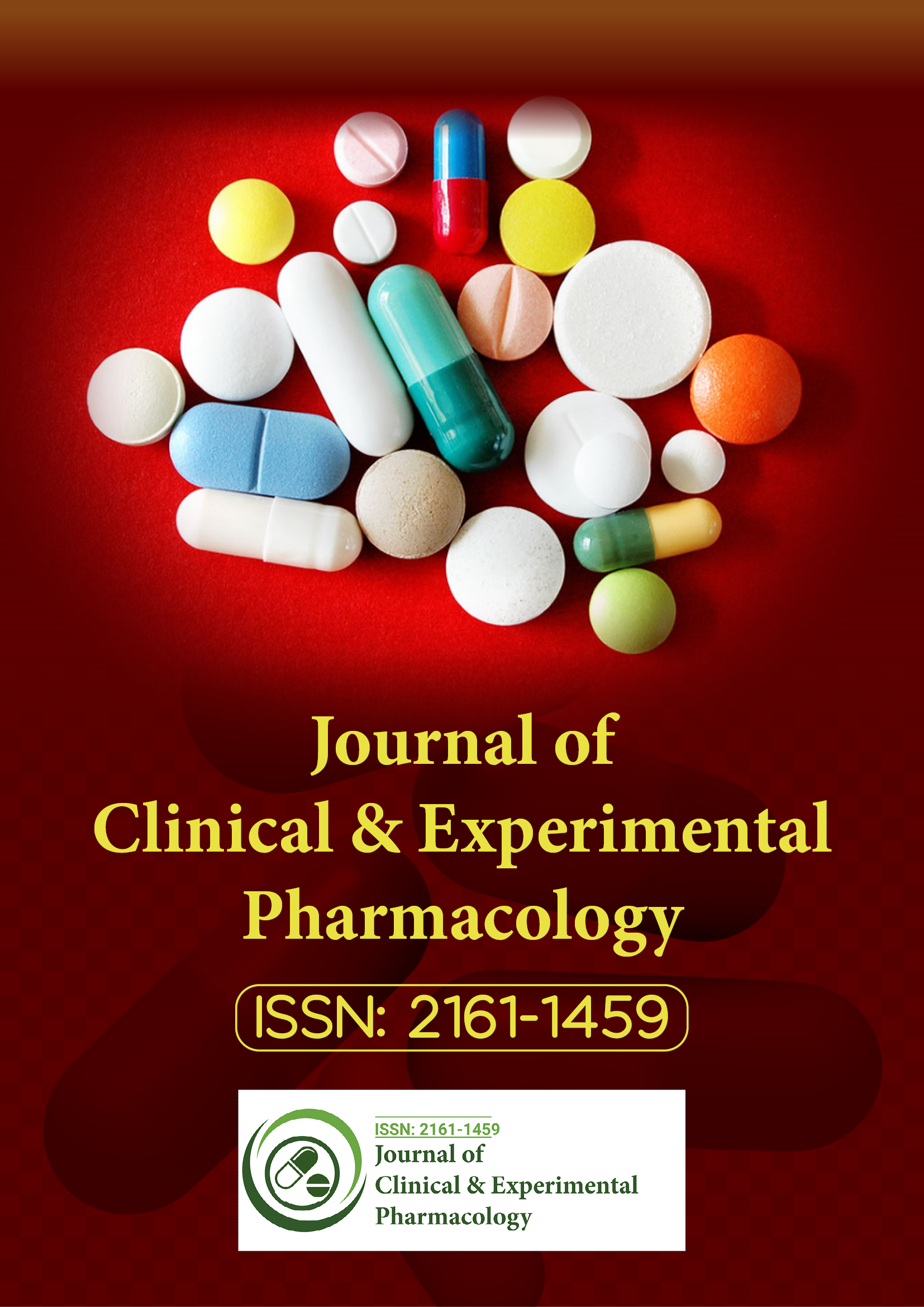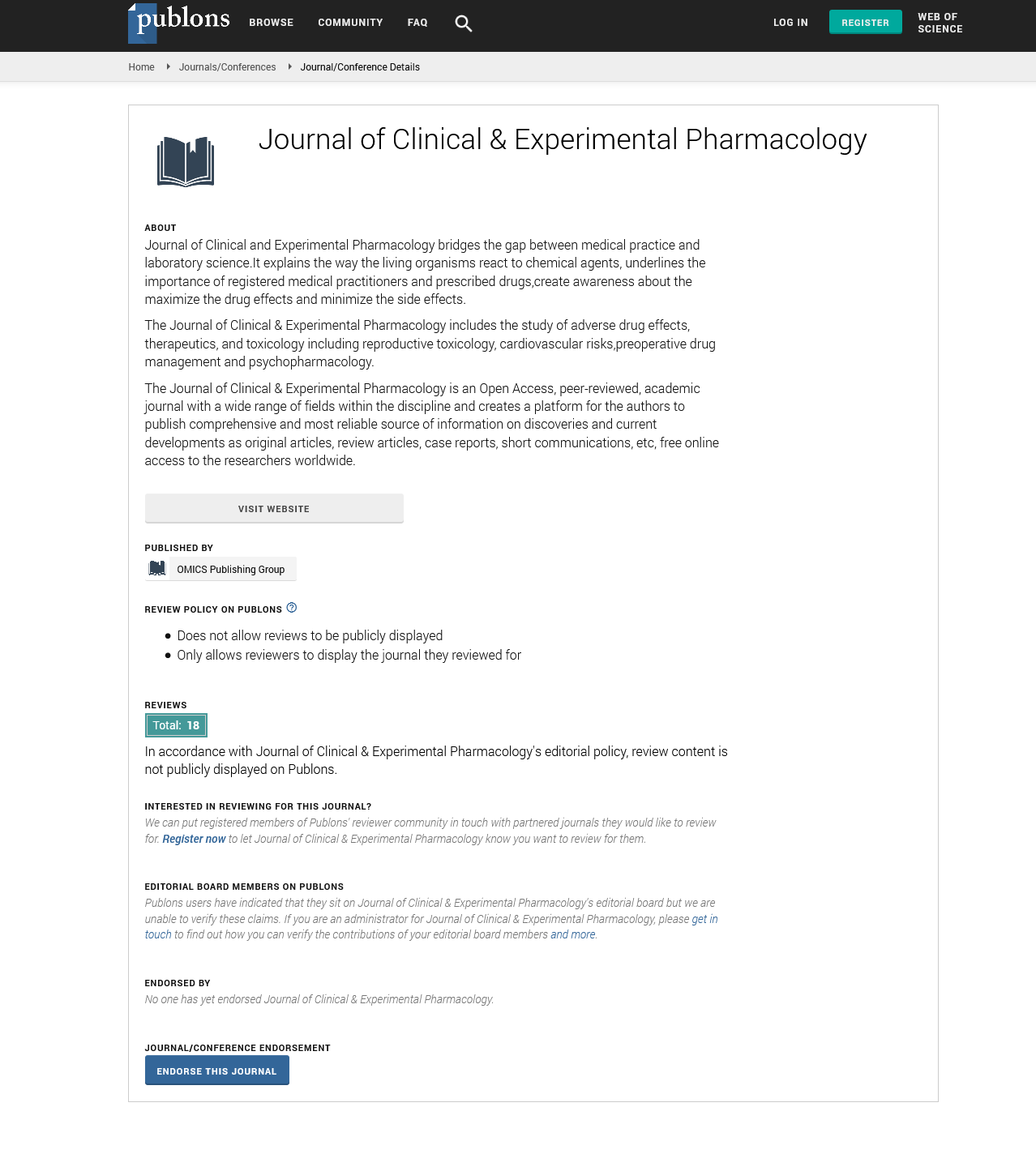Indexed In
- Open J Gate
- Genamics JournalSeek
- China National Knowledge Infrastructure (CNKI)
- Ulrich's Periodicals Directory
- RefSeek
- Hamdard University
- EBSCO A-Z
- OCLC- WorldCat
- Publons
- Google Scholar
Useful Links
Share This Page
Journal Flyer

Open Access Journals
- Agri and Aquaculture
- Biochemistry
- Bioinformatics & Systems Biology
- Business & Management
- Chemistry
- Clinical Sciences
- Engineering
- Food & Nutrition
- General Science
- Genetics & Molecular Biology
- Immunology & Microbiology
- Medical Sciences
- Neuroscience & Psychology
- Nursing & Health Care
- Pharmaceutical Sciences
Short Communication - (2025) Volume 15, Issue 4
Pharmacoeconomics: Evaluating the Value of Medicines in Healthcare Systems
Daniel Rickelton*Received: 01-Aug-2025, Manuscript No. CPECR-25-29888; Editor assigned: 04-Aug-2025, Pre QC No. CPECR-25-29888 (PQ); Reviewed: 19-Aug-2025, QC No. CPECR-25-29888; Revised: 27-Aug-2025, Manuscript No. CPECR-25-29888 (R); Published: 05-Sep-2025, DOI: 10.35248/2161-1459.25.15.499
Description
Pharmacoeconomics is a branch of health economics that evaluates the cost and outcomes of pharmaceutical products and services. It provides evidence-based insights into the economic value of medicines, helping policymakers, healthcare providers, and insurers make informed decisions about resource allocation [1-3]. With rising healthcare costs and increasing demand for innovative therapies, pharmacoeconomics has become an important tool in ensuring that medicines deliver both clinical benefits and economic sustainability.
At its core, pharmacoeconomics compares the inputs and outputs of drug therapy. Inputs include direct costs such as drug prices, diagnostic tests, and hospital services, as well as indirect costs like lost productivity due to illness. Outputs encompass therapeutic outcomes, improvements in quality of life, and reductions in disease burden. By systematically analyzing these factors, pharmacoeconomics determines whether a treatment offers sufficient value relative to its cost.
There are several established methods of pharmacoeconomic evaluation. Cost-minimization analysis is applied when two or more therapies demonstrate equivalent efficacy and safety, allowing decision-makers to select the least costly option. Cost-Effectiveness Analysis (CEA) compares interventions by calculating the cost per unit of health outcome, such as cost per life-year gained. Cost-Utility Analysis (CUA) extends this approach by incorporating patient quality of life, typically expressed in Quality-Adjusted Life Years (QALYs). Cost-Benefit Analysis (CBA), on the other hand, converts both costs and outcomes into monetary values, enabling direct comparison of net benefits [4].
Pharmacoeconomics plays an important role in drug development and market access. Pharmaceutical companies increasingly conduct economic evaluations alongside clinical trials, generating data that demonstrate not only efficacy but also value for money. Health Technology Assessment (HTA) agencies, such as the National Institute for Health and Care Excellence (NICE) in the United Kingdom, rely on pharmacoeconomic evidence to decide whether new medicines should be reimbursed or included in national formularies [5]. These assessments ensure that limited healthcare resources are spent on interventions that yield meaningful benefits.
The discipline also addresses disparities in access to medicines. In many low- and middle-income countries, high drug prices limit availability, despite significant disease burdens. Pharmacoeconomic evaluations can guide strategies such as differential pricing, generic substitution, and inclusion of essential medicines in public health programs [6-8]. By quantifying the long-term savings associated with improved health outcomes, pharmacoeconomics supports policies that expand access while maintaining financial sustainability.
Another important aspect is the evaluation of chronic disease therapies. Conditions such as diabetes, hypertension, and cancer require long-term treatment, often with costly medications. Pharmacoeconomics provides tools to assess the lifetime costs and benefits of therapy, balancing upfront expenses with reductions in hospitalizations, complications, and mortality. Such analyses are increasingly important as populations age and the prevalence of chronic diseases rises worldwide [9].
Pharmacoeconomics also contributes to personalized medicine. Genetic testing and targeted therapies, while often expensive, may offer substantial benefits for specific patient subgroups. Economic evaluations determine whether these benefits justify the costs and identify the circumstances under which personalized approaches are most efficient. This integration of pharmacogenomics and pharmacoeconomics is shaping future healthcare models, aligning innovation with affordability.
The use of real-world evidence further enhances pharmacoeconomic evaluations. Data from electronic health records, insurance claims, and patient registries provide insights into treatment outcomes outside controlled clinical trials [10]. Such evidence helps to capture the actual costs and benefits of medicines in routine practice, supporting dynamic policy decisions and post-marketing reassessment of therapies.
Despite its utility, pharmacoeconomics faces challenges. Differences in healthcare systems, pricing structures, and societal preferences make it difficult to generalize findings across regions. Ethical considerations also arise when assigning monetary values to health outcomes, particularly in life-threatening conditions. Addressing these challenges requires methodological transparency, stakeholder engagement, and adaptation of evaluation frameworks to local contexts.
Conclusion
Pharmacoeconomics bridges clinical outcomes and economic evaluation, ensuring that medicines deliver value to patients and healthcare systems alike. By applying cost-based analyses, it guides decision-making in drug reimbursement, formulary inclusion and public health strategies. Its relevance extends to chronic disease management, personalized medicine and global health equity, making it a central discipline in modern healthcare planning. As healthcare demands grow and budgets tighten, pharmacoeconomics will continue to inform policies that balance innovation, access and sustainability.
References
- Liang T, Zhang R, Liu X, Ding Q, Wu S, Li C, et al. Recent advances in macrophage-mediated drug delivery systems. Int J Nanomedicine. 2021:2703-2714.
[Crossref] [Google Scholar] [PubMed]
- Bennett B. Isolation and cultivation in vitro of macrophages from various sources in the mouse. Am J Pathol. 1966;48(1):165.
[Google Scholar] [PubMed]
- Garash R, Bajpai A, Marcinkiewicz BM, Spiller KL. Drug delivery strategies to control macrophages for tissue repair and regeneration. Exp Biol Med (Maywood). 2016;241(10):1054-1063.
[Crossref] [Google Scholar] [PubMed]
- Cohen AB, Cline MJ. The human alveolar macrophage: Isolation, cultivation in vitro and studies of morphologic and functional characteristics. J Clin Invest. 1971;50(7):1390-1398.
[Crossref] [Google Scholar] [PubMed]
- Kim S, Shi Y, Kim JY, Park K, Cheng JX. Overcoming the barriers in micellar drug delivery: Loading efficiency, in vivo stability and micelle-cell interaction. Expert Opin Drug Deliv. 2010;7(1):49-62.
[Crossref] [Google Scholar] [PubMed]
- Wang HF, Liu Y, Yang G, Zhao CX. Macrophage-mediated cancer drug delivery. Mater Today Sustain. 2021;11:100055.
- Leonetti B, Perin A, Ambrosi EK, Sponchia G, Sgarbossa P, Castellin A, et al. Mesoporous zirconia nanoparticles as drug delivery systems: Drug loading, stability and release. J Drug Deliv Sci Technol. 2021;61:102189.
- Nguyen VD, Min HK, Kim DH, Kim CS, Han J, Park JO, Choi E. Macrophage-mediated delivery of multifunctional nanotherapeutics for synergistic chemo-photothermal therapy of solid tumors. ACS Appl Mater Interfaces. 2020;12(9):10130-10141.
[Crossref] [Google Scholar] [PubMed]
- Ta HT, Prabhu S, Leitner E, Jia F, von Elverfeldt D, Jackson KE, et al. Enzymatic single-chain antibody tagging: A universal approach to targeted molecular imaging and cell homing in cardiovascular disease. Circ Res. 2011;109(4):365-373.
[Crossref] [Google Scholar] [PubMed]
- Laakkonen P, Vuorinen K. Homing peptides as targeted delivery vehicles. Integr Biol (Camb). 2010;2(7-8):326-337.
[Crossref] [Google Scholar] [PubMed]
Citation: Rickelton D (2025). Pharmacoeconomics: Evaluating the Value of Medicines in Healthcare Systems. J Clin Exp Pharmacol. 15:499.
Copyright: © 2025 Rickelton D. This is an open-access article distributed under the terms of the Creative Commons Attribution License, which permits unrestricted use, distribution and reproduction in any medium, provided the original author and source are credited.

